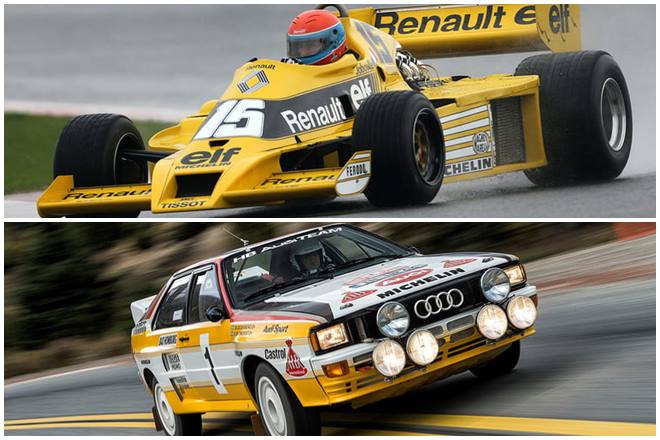-

Of all the car manufacturers you've heard of, most of them have gone racing at one point or the other or they still do. For eg, Ford or Ferrari, even our home-grown Mahindra is now a crucial player in Formula E racing. But why do they do it? A – it gets them a lot of attention in terms of marketing and B – modern cars can benefit tremendously from the learnings that come from these races.
-
Semi-automatic gearboxes: Porsche’s PDK dual-clutch transmission is quite a regular fitment in the manufacturer's cars today, but the tech was first developed for use in the 956 race car in 1983. The PDK gearbox first featured in a mass-produced Porsche in 2009. In this time, Ferrari developed a semi-automatic transmission for F1 in 1989, followed by its introduction in Mondial in 1993 and F355 roadcar in 1997. Ferrari also introduced paddle-shifters.
-
Rearview mirrors: Back in 1911, Indianapolis 500 race drivers had to take a 'riding mechanic' along during the race to give them heads up about cars approching from the back. It was when Ray Harroun raced in a especially race-prepped Marmon Wasp with a streamlined single-seat bodywork, there was no room left for the riding mechanic. So, Harroun mounted a pice of glass on to the dash – and he also was that race.
-
All-wheel-drive: The system was first introduced in the Audi Coupe Quattro for use by regular cars. Audi initially built the Quattro to gain stronger grounds in the World Rally Championship. In 1983 and 1984, Audi won the championship along with bagging three wins at the Pikes Peak hill climb through the 80s.
-
Carbon-fibre: McLaren Formula One team's then-designer John Barnard was looking for a way to shrink the chassis of a race car to make room for more underbody aerodynamic elements in 1979. But slimming down the chassis would mean it would not be stiff enough. Barnard had heard of carbon fibre used by British Aerospace and decided to use it for an F1 chassis. The result was the McLaren MP4/1, which debuted in the 1981 F1 season. And today, several exotic roads cars make use of carbon fibre that promises weight reduction.
-
Disc brakes: Perhaps the most relevant advancement in car tech are disc brakes. If you can't stop well in time, nothing else matters. So, Jaguar was intrigued by a disc brake system developed by Dunlop for aircrafts in the 1950s. If it could stop an airplane effectively, it would a car too. The two worked together to bring the tech to cars and Jaguar C-Type with disc brakes won the 24-hour Le Mans.
-
Turbochargers: Turbochargers were installed on road cars before racecars but didn't make much impact until they did go racing in the 1970s. Porsche launched its 917/10 and 917/30 Can-Am cars, and Renault brought turbo power to Formula One. By the 1980s, turbocharging was in with racecars all kinds – F1, rally, endurance. With road cars, manufacturers can plonk smaller engines and produce more power. <a href="https://www.financialexpress.com/auto/car-news/biggest-problem-with-turbochargers-what-is-turbo-lag-and-how-are-engineers-beating-it/638604/"><strong>Turbochargers – all you need to know</strong></a>
-
ABS: Disc brakes improved braking but they can make the wheel lock and slide under emergency braking. Anti-lock braking system, like disc brakes, was an aircraft tech. A car version of the tech was fitted to the Ferguson P99 F1 car in 1961. Today, it is a mandate for road cars to feature ABS. However, it is now banned in Formula One cars.
6 Photos